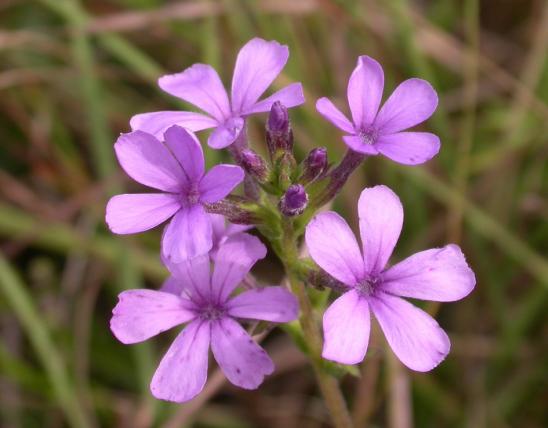
A smooth, erect, native perennial with square stems and rigid branches. The square stems may appear winged with narrow flaps of tissue. Flowers arise usually singly from upper leaf axils, pinkish magenta, with a narrow tube and 6 petals, dimorphic (in a flower, either the stamens are longer than the pistil or the reverse); each petal with a darker magenta central stripe. Blooms June–September. Leaves mostly opposite, sometimes alternate toward the top, stalkless, narrow, linear-oblong to lance-shaped with a rounded base and pointed tip.
Similar species: Purple loosestrife (L. silicaria) is a noxious invasive weed from Eurasia introduced as an ornamental. Its stems, though 4-angled, lack "wings"; its leaves are larger (more like willow leaves) and often have hairs; and there are only 5 petals.
Height: to 3 feet.

Statewide, though mostly absent from southeastern Missouri.
Habitat and Conservation
Occurs in wet places, fields, prairie swales, swamps, ditches, margins of ponds, and sloughs. A close relative, purple loosestrife (L. salicaria) (from Eurasia), is a noxious, invasive weed that overwhelms wetlands, ponds, and ditches, supplanting and eliminating native flora. If you see purple loosestrife growing outside cultivation, please contact the Missouri Department of Conservation to report the location.
Human Connections
Unlike invasive purple loosestrife, which easily gets out of control and causes environmental disasters, winged loosestrife can safely be used in cultivation where striking spikes of purple flowers will embellish moist or wet areas.
Ecosystem Connections
The flowers are visited by a variety of insects. As with all habitats, wetlands comprise not only the swampy earth they occupy but also the many interacting species of plants and animals that live there. This native loosestrife contributes to that richness. Invasive purple loosestrife diminishes it.
























